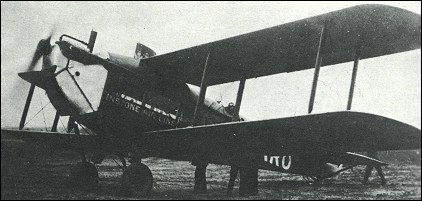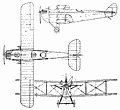 |
De Havilland D.H.181920 |  |
| COMMERCIAL BIPLANE | Virtual Aircraft Museum / United Kingdom / De Havilland |
 |
The designation D.H.17 was allocated to a project for a twin-engined 16-passenger biplane which was not built. The next type number, de Havilland D.H.18, was allocated to a large singleengined biplane accommodating eight passengers in an enclosed cabin; the pilot was seated in an open cockpit behind the wings. Built at Hendon, the D.H.18 first flew early in 1920 and was delivered to Aircraft Transport & Travel Ltd for use on the Croydon-Paris service. However, this D.H.18 had a short life, terminated by a forced landing near Croydon in August of the same year. During 1920 the Aircraft Manufacturing Company, which had been building de Havilland designs, was re-formed as the de Havilland Aircraft Company Ltd. The new organisation built two modified aircraft designated D.H.18Aforlnstone Air Line, followed by a third. These were kept busy on Continental services until the first, having accumulated high flying hours, was withdrawn from use in September 1921; another was lost in a crash only two months after delivery. The third production D.H.18A, delivered to Instone in June 1921, was passed to Daimler Hire Ltd in April 1922, only to be destroyed over France a few days later in a mid-air collision with a Farman Goliath. The last two aircraft were designated D.H.18B, and had plywood-covered fuselages and increased weights; they served with Instone for a short time before the second was dismantled in 1923. The first was used in Air Ministry flotation tests, being deliberately landed in the sea off Felixstowe in May 1924. Strangely, the last surviving D.H.18 was the first production aircraft which, following its withdrawal from Instone's use in 1921, was delivered to RAE Farnborough for test purposes. It was finally scrapped in 1927.
|  COMPANY PROFILE | |||||||||||||||||||||||||||||||||||||||||||||||||||||||||
 |

|

